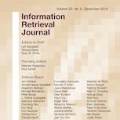Introduction: The goal of this paper is to study inequities in breast cancer (BC) health care outcomes for Chilean women, including case fatality (FR) and survival rates (SR), stratified by type of health care provider and geographical area. A secondary goal is to estimate BC incidence (IR) and mortality (MR) rates by health care providers and region. Methods: We used two public anonymized databases provided by the Ministry of Health: the national death and hospital discharges datasets. For survival analysis, we used the Kaplan Meier product-limit estimator (KM) with a 95% ci and the Cox proportional hazards model (CM) with null-hypothesis significance testing of p>0.001. Results: We considered a cohort of 58,254 and 16,615 BC hospital discharges and deaths for the period 2007-2018. New cases and deaths due to BC increased by 43.6% and 33.6% respectively. Avg age-adjusted IR and MR were 44.0 and 10.5, respectively. Women affiliated to a private provider (ISAPRE) have an avg age adjusted IR of 60.6 compared to 38.8 for women affiliated with the public provider (FONASA). The national FR has remained constant over time, with a mean of 26.8. Women affiliated with ISAPRE had a considerably lower FR during the period under study, with an avg of 15.7 compared to 27.5 for women in FONASA. The avg 5-year SR were 0.81 and 0.90 for FONASA and ISAPRE. Women from the Metropolitan area have higher SRs than women from other regions. SRs obtained using the CM have a similar behavior to those obtained by the KM. Discussion: Despite the inclusion of BC in the GES plan in 2005 to provide greater, there are still significant differences in FR and SR for patients affiliated to ISAPRE compared to those in FONASA, a choice that is directly associated with socioeconomic level, and for patients in the Metropolitan and other regions. Further studies are required to determine the causes of these disparities.
翻译:本文的目的是研究智利妇女乳腺癌(BC)保健成果方面的不平等,包括病例死亡率(FR)和存活率(SR),按保健提供者类型和地理区域分列。第二个目标是估计保健提供者和地区不列颠哥伦比亚发病率(IR)和死亡率(MR),方法:我们使用了卫生部提供的两个公共匿名数据库:国家死亡和医院排放数据集。为了进行生存分析,我们使用了卡普兰梅耶产品限值(KM),其死亡率为95%的ci和Cox比例危害模型(CM),其数值为p>0.001。结果:我们认为,2007-2018年期间,不列颠哥伦比亚的发病率(IR)和死亡率(MRM)的死亡率分别为43.6%和33.6%。 Avg经年龄调整的IRR和MM分别为44.0和10.5。


